Six major producing areas of Colombian coffee introduce the origin of Colombian coffee.
Although Colombia, the second largest producer of coffee in the world, is far inferior to Brazil in terms of quantity, it is superior in quality. Colombia produces the most washed Arabica coffee in the world. The coffee tastes soft and sweet, and it is properly handled with a hint of cocoa.
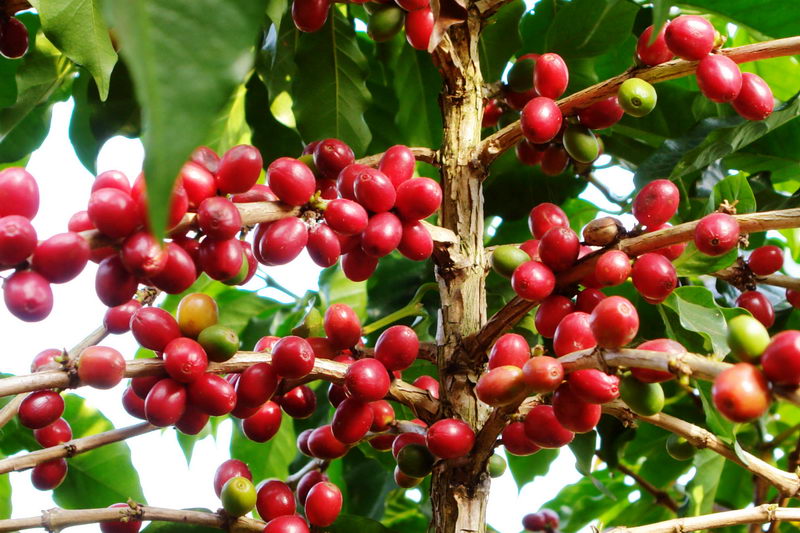
Colombian coffee beans are bigger, more uniform and beautiful than ordinary coffee beans. Colombian coffee grows in low latitudes, high altitudes and volcanic soil, so Colombian coffee beans have a balanced flavor, rich acidity, unique flavor and relatively full thickness. sometimes with a touch of red wine, admirable fruit flavor. So Colombian coffee beans will also appear as blended coffee beans. Such as: Qianjie boutique mixed coffee (Brazilian coffee beans + Colombian coffee beans), mellow taste, nuts, cream, dark chocolate and caramel sweet taste is very good.
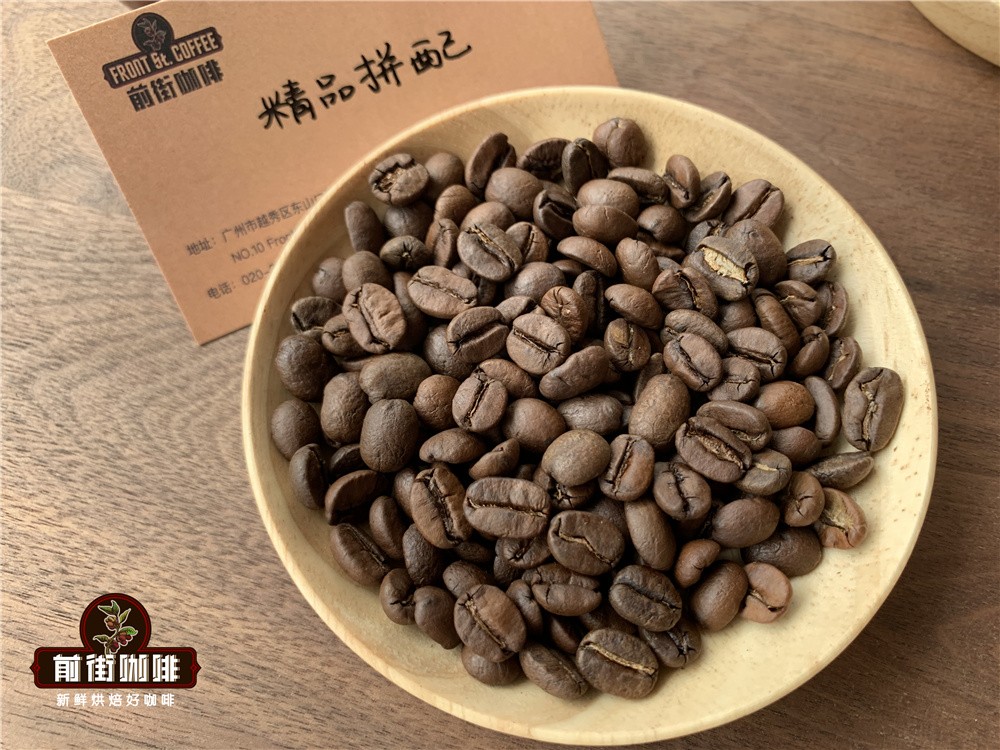
Located in the northwest of the South American continent, bordering Panama in Central America, Colombia is located in the tropics at latitudes three to eight degrees north of Colombia. The climate varies according to the topography, with rich volcanic soil, annual rainfall of 2000 to 3000mm, mild climate, humid air, and diverse climate. Colombian coffee is harvested all the year round. The southern part of the eastern plain and the Pacific coast have a tropical rain forest climate, the mountains with an elevation of 1000-2000 meters have a subtropical climate, and the northwest has a savanna climate. Average annual temperature: 15.8-20.5 degrees Celsius. The average temperature in the coffee area will vary between 18 ℃ and 22.5 ℃.
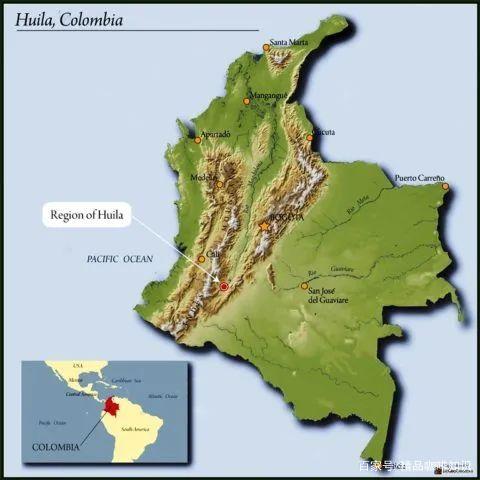
Colombian coffee is very regional and can be divided into more than 200 grades. The more famous ones are Medellin, Armenia and Manizales, traditionally referred to as "MAM". The country's boutique bean producing areas are mainly in the south, more than 1500 meters above sea level, including San Augustin, Huila in Huilan Province, Popayan, Cauca in Cauca Province, Nari ñ o Province, and Tolima Province, where products have delicate sour and raspberry aromas, caramel aromas and full sweetness.
One of the most famous boutique coffee producing areas is Huilan Province, which is located in the southern part of the Central Mountains in southern Colombia.
Located in the southern part of the Central Mountains in southern Colombia and the mountainous areas of southwestern Colombia, Huilan Province is the most famous boutique coffee producing area in the country. The area is a hilly area surrounded by mountains, and there is an active volcano that erupted large mineral-rich volcanic ash in 2008 to cover the soil of Colombia. Planted above 1500 meters above sea level, the most important rivers in Colombia meet here, bringing considerable water resources and moisture. Contrary to the general impression that a large amount of Colombian coffee is balanced and smooth, the fine Goran products produced by many small farmers in micro batches are actually very characteristic of the flavor of the producing area. In recent years, with the attention to the quality of coffee and the demand for fine coffee in the international market, the original bean size grading system has been gradually abandoned to micro-batch (Micro-regional selections) provided by small farmers in micro-production areas, and dozens of small farmers have provided their unit harvest into a micro-batch to sell, and because of this, they have more opportunities to measure each batch by cup. Directly pick out a lot of high-quality specific smallholder coffee.
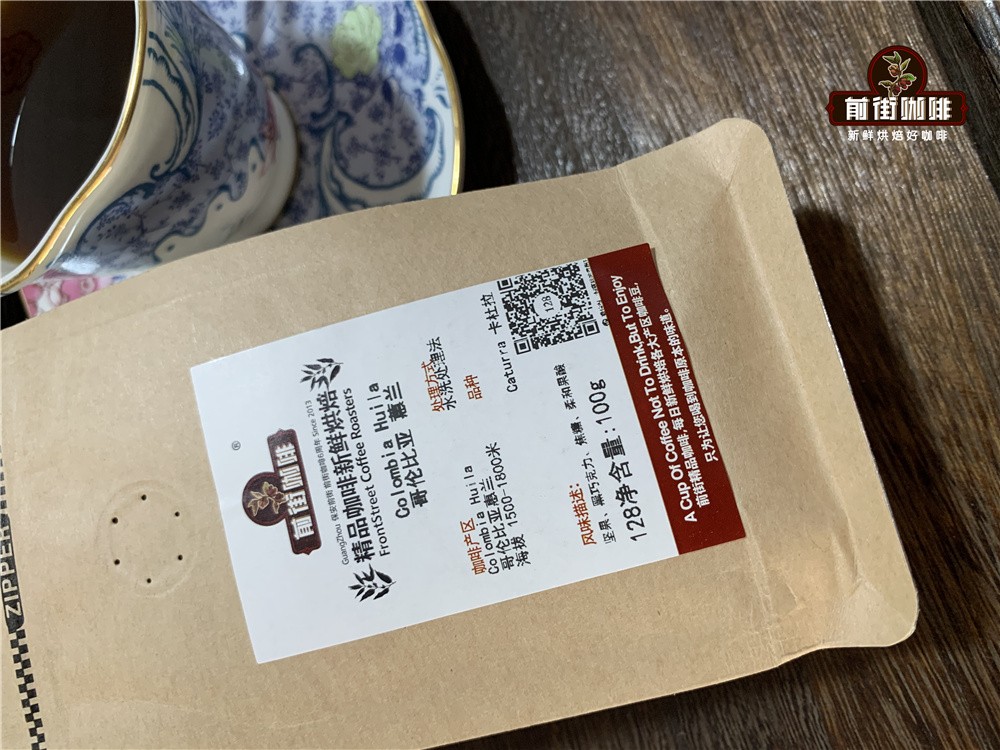
The producing area of Cymbidium is naturally the most ash-rich area. Whether coffee can have a better flavor, in addition to the variety and altitude, the nutrition in the soil is also very important, so the coffee beans produced in the Huilan producing area have delicate acidity, nutty flavor and caramel-like aftertaste. This is also a unique flavor feature of coffee in southern Colombia.
Qianjie food beans Columbia Huilan Coffee is from the Cymbidium producing area.
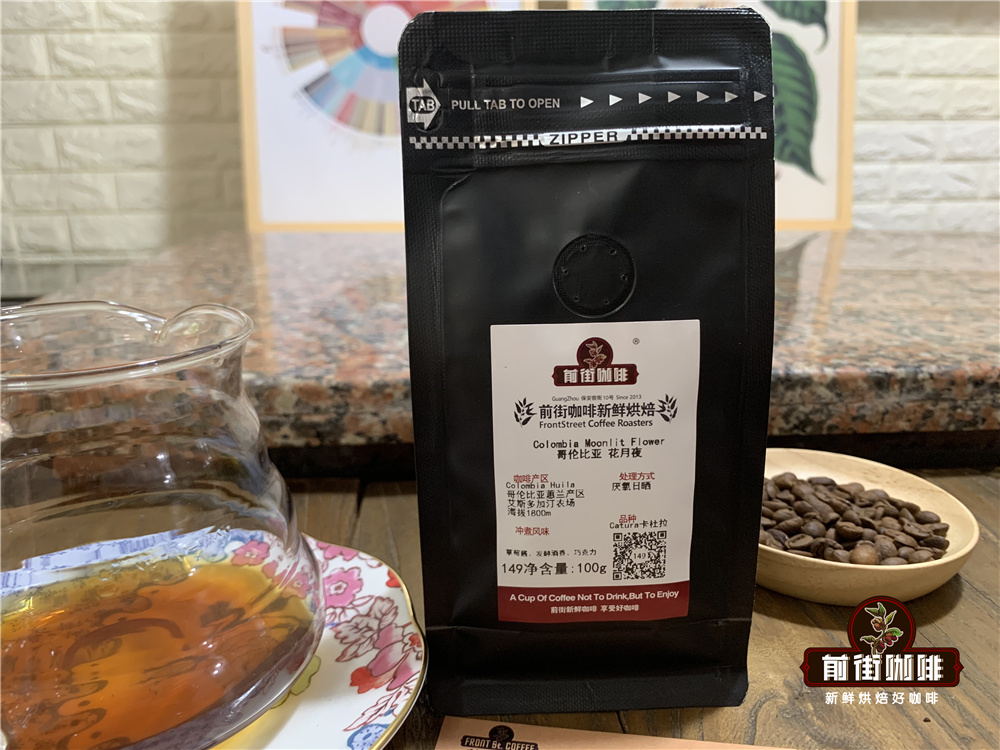
Qianjie Columbia Flower and Moon Night Coffee comes from the Esteogatine Manor in Astoria City, Huilan Province. According to Qianjie, the owner Ramirez comes from a coffee-growing family. He has been engaged in coffee production since the age of 18. He worked as a coffee professional in the city of Eskodo, and later bought this estate called Eastogatine to grow Kaddura Caturra.
Cauca province is a certified coffee producing area in Colombia, with an average elevation of 1758m and a maximum elevation of 2100m. The topography, precipitation, temperature and volcanic soil of the area prepare suitable conditions for the growth of coffee. 80% is mountainous, with parallel mountain systems in the east and middle, part of the Andes, and the central mountain system includes two major volcanoes, Sotara and Petacas. The border province of Cauca, like other southwestern producing areas, has a distinct unimodal distribution (monomodal). The dry season mainly occurs from August to September each year, followed by a concentrated coffee season followed by the following year's concentrated coffee harvest season.
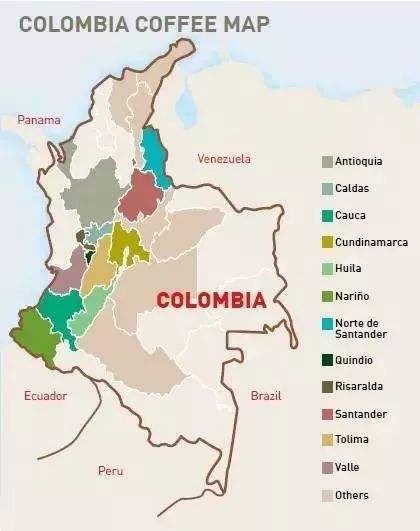
The biggest difference in climate with other producing areas is probably the relatively large temperature difference, with a daily average temperature of 11 ℃ and a daytime average temperature of 18 ℃. The temperature difference between day and night is an important factor in quality coffee. Low night temperatures and relatively higher elevations slow down the growth of coffee, allowing coffee seeds and beans to more fully absorb the nutrients of coffee fruits, as well as better acidity and commendable special sweetness of Coca Coffee.
Nalinglong province is located in the southwest of the country, facing the Pacific Ocean to the west and Ecuador (Ecuador) to the south. The Andes Mountains run through the province. Coffee is grown on a high-altitude cloud belt of 1600 Murray 2300. The soil is fertile volcanic geology, with small but full beans and green color. Most of the annual output of Nalinglong is purchased by large American soybean merchants. Narino province is located in the southwest of Colombia, bordering by the Pacific Ocean to the west and neighboring Ecuador (Ecuador) to the south, the Andes Mountains run through the province, where there are magnificent mountains and beautiful scenery, and there are many rivers flowing south through this area, belonging to Colombia's alpine coffee growing area, which has given birth to many small farmers of fine coffee. The total annual output of that Linglong province is about 150000 bags, while the part belonging to fine beans is only about 6000 bags.
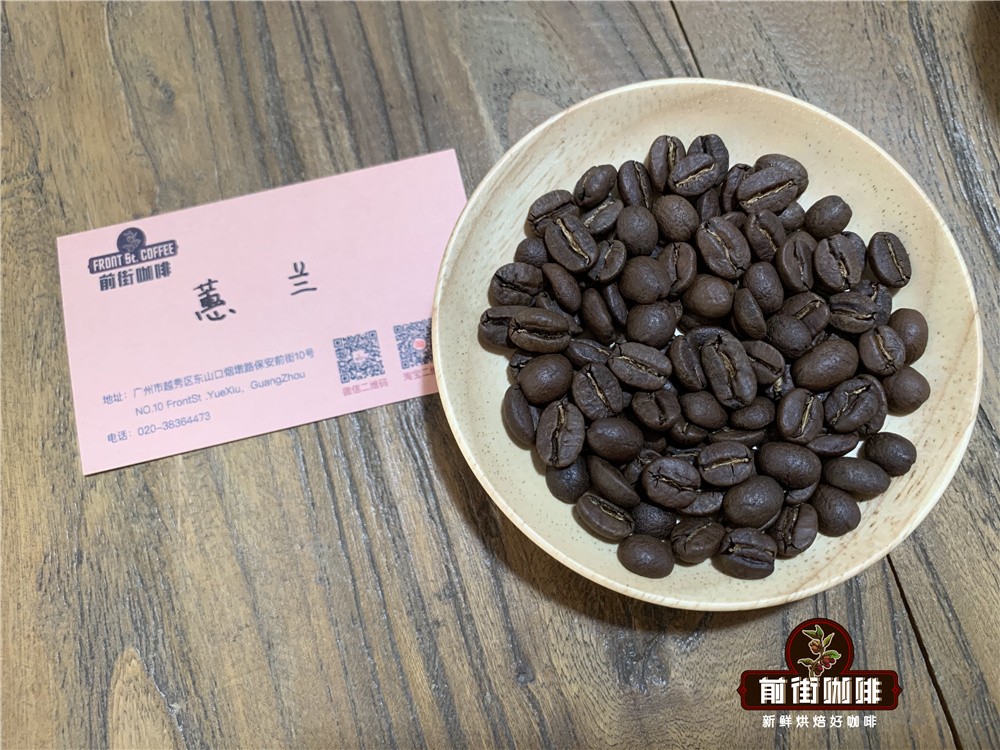
Tolima is adjacent to Huilan and Cauca, which runs through the north-south Andes (M. Andes) and the Cordillera (M. Cordillera), and between the two famous mountain systems is the Magdalena River (R. Magdalena) running from south to north. The name Tolima comes from the earliest people who lived here, "Pijaopeople". In the language of this ancient people (Pijao word), tolima means "snow cover" and "snowed". The farms in Tolima are generally slightly larger than those in other southern Colombian producing areas, ranging from 10 to 15 hectares. The cooperative approach is also popular here, where farmers send their small batches of fresh coffee and fruit to the cooperative's processing plant. Some farmers will also choose to deal with it on their own, making use of their own small-scale treatment facilities that can handle the harvest of the day.
Medellin Medellin: located in northern Colombia, it is rich in taste, moderate in acidity and intriguing in high sweetness. Medellin exported by the FNC Association will be more uniform and clean than the regular Medellin.
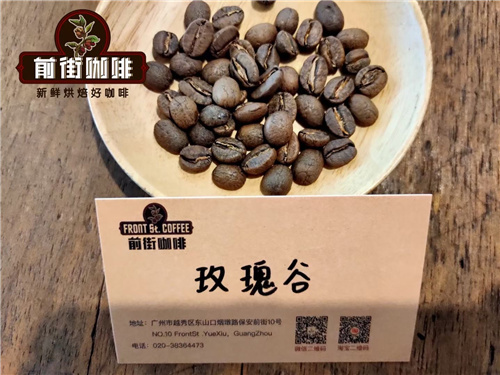
Santander, Santander province: located in northern Colombia, west of Magdalenaho, planting altitude of about 1400-1600m, covering an area of 30537 square kilometers. Qianjie coffee has passed the cup test, and the coffee beans in this area are famous for their strong taste, long aftertaste and unique vegetation and fresh flavor.
Rose valley coffee beans
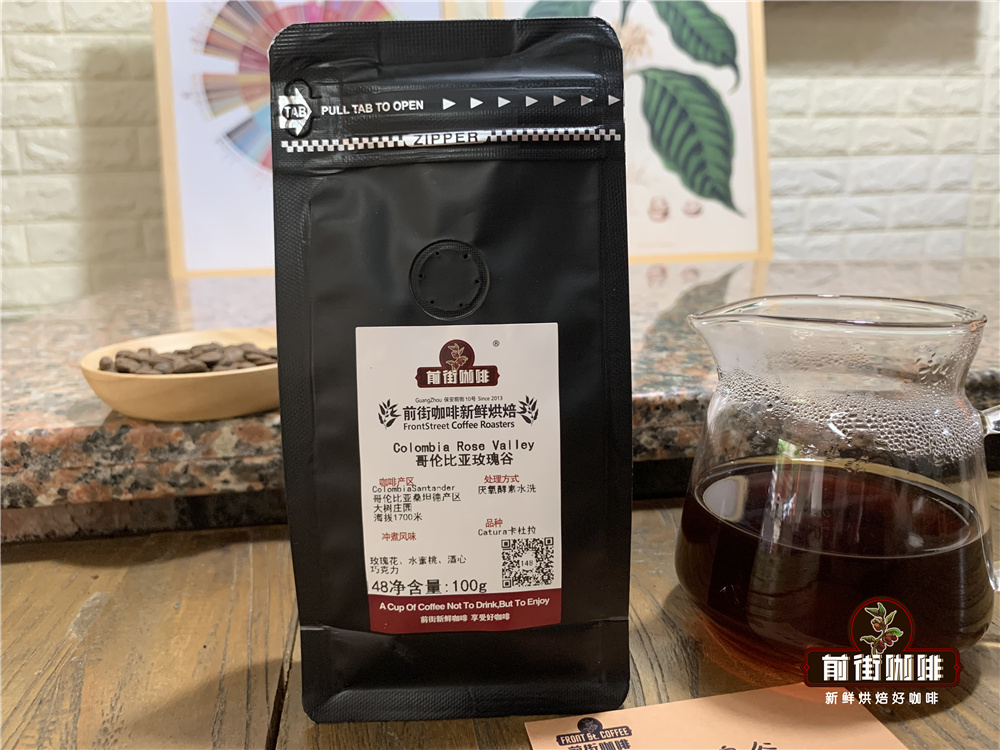
The front street Columbia Rose Valley Coffee comes from the Tree Manor in the Santander region of Colombia. Santander is located in northern Colombia, west of Magdalenaho, planting about 1400-1600 meters above sea level, covering an area of 30537 square kilometers. Santander, a very important but rarely mentioned province in Santander, is actually the first province in Colombia to start growing coffee and now accounts for about 5% of Colombia's coffee production. Qianjie coffee has passed the cup test, and the coffee beans in this area are famous for their strong taste, long aftertaste and unique vegetation and fresh flavor.
Colombian coffee variety
At present, Colombia is the world's largest producer of washed Arabica, the second largest producer of Arabica and the third largest producer of coffee in the world, with an annual output equal to about 1/3 of that of Brazil. 12% of the world's total output. This puts them behind only Brazil and Vietnam, but Colombia grows almost only high-end Arabica coffee beans.
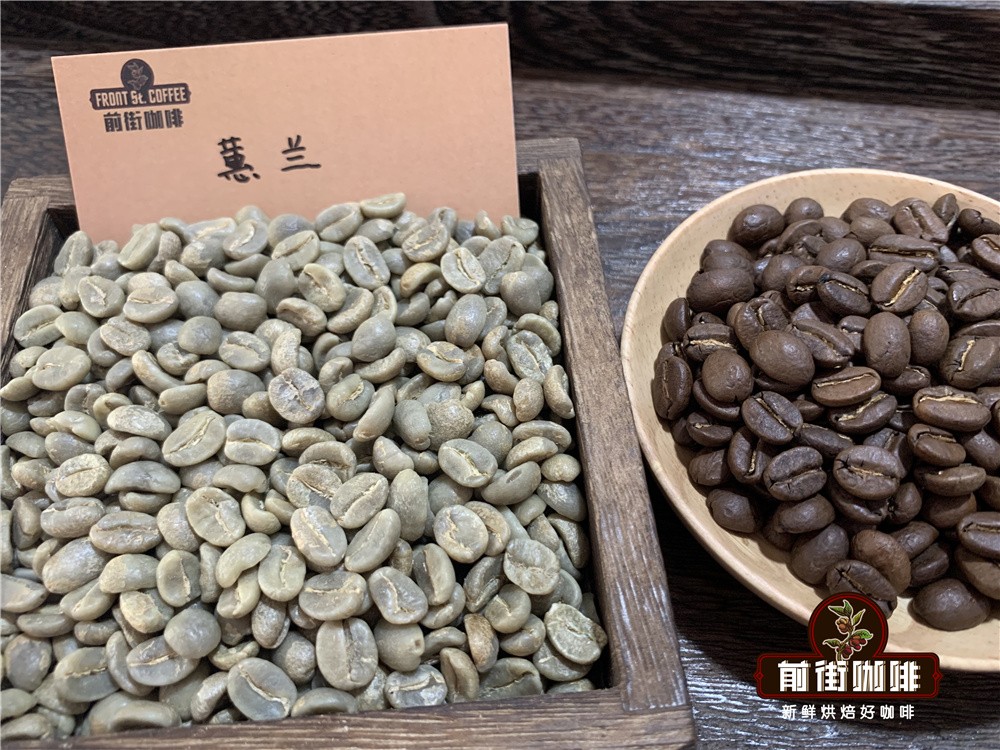
Kaddura, a natural variety of Arabica Bourbon, was discovered in Brazil in 1937. Its tree is not as tall as bourbon and smaller. Due to inheriting the blood of bourbon, the disease resistance is relatively weak, but the yield is higher than that of bourbon. Although found in Brazil, Kaddura is not suitable for growing in Brazil, so it is not planted on a large scale in Brazil, but is popular in Central and South America, such as Colombia, Costa Rica and Nicaragua. Kaddura is planted on a large scale.
In addition to Kaddura, Bourbon, Typica and Parkmara, which are common in America, Colombia also has three disease-resistant varieties unique to Colombia, namely, Castillo, Tabi and Colombia with the same name as Cenicafe. Of course, there are also some rare and valuable varieties such as Rosa Gesha, small grain mocha (Mocca), Rumei Sudan (Rume Sudan), Eugene Odes (Eugenioides), pointed bourbon (Laurina), and Mara Rosa (a natural hybrid of Maraguesa- Malaggippe and Rosa).
Colombian coffee bean treatment
Colombia is rich in water resources, so it is very suitable for washing treatment, so the vast majority of Colombian coffee is washed. Unlike other South and Central American countries, most coffee growers process coffee in their own washing plants. Every small peasant family has a small special processor (Ecomill or Eco-Pulper). The harvested coffee fruit is poured into it, which removes not only the peel and pulp, but also most of the pectin, and only a very small amount of water is needed. Next, the shell beans with a small amount of pectin will go into a small pool or container, which may be a cement pool (some tiles) or a stainless steel bucket that will ferment overnight and loosen the residual pectin. Rinse with clean water the next day, and the washing process is completed. Carry out all treatments in your own home so that growers can have complete control over the quality of coffee.
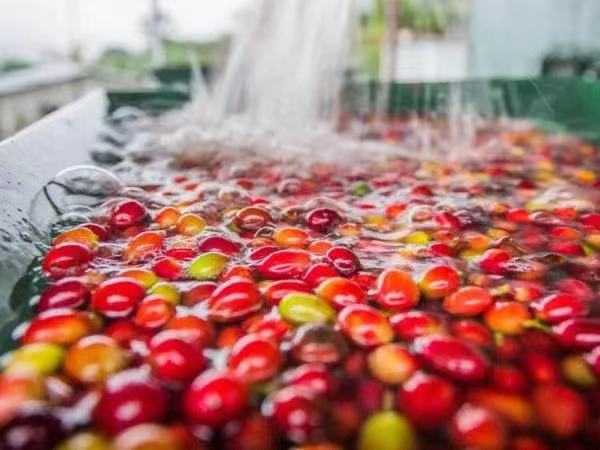
With the development of boutique coffee, many farms will introduce small batches of refined tanning and honey treatment, as well as the use of special treatment. For example, Flower Moon Night Coffee, which is very popular in Qianjie, has a strong sense of berry jam fermentation, while Rose Valley Coffee has a charming rose fragrance and the sweetness of peach. Although the aroma of these novel treatments of Colombian coffee is really special, it masks the original flavor of Colombian coffee producing areas. Qianjie believes that it is best to choose the natural way of washing to highlight the clean taste of high-altitude coffee. Therefore, Qianjie chose washed Colombian Huilan coffee as the representative of Colombian coffee.
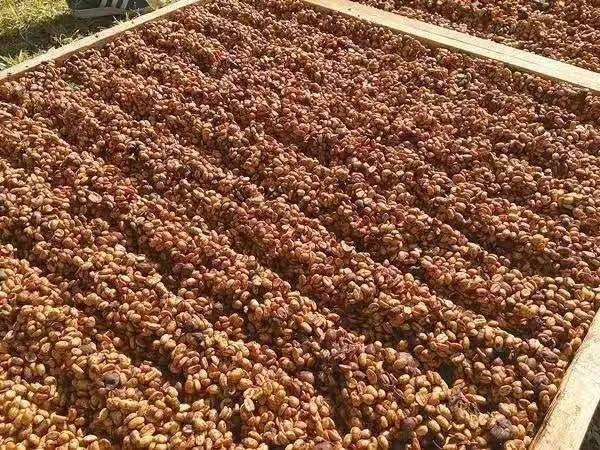
Front Street brewing Columbia Flower Moon Night and Rose Valley Coffee parameters:
V60 filter cup, powder-water ratio at 1:15, medium grinding (about the size of coarse sugar / 80% screening rate of China 20 standard sieve), water temperature of 91 degrees.
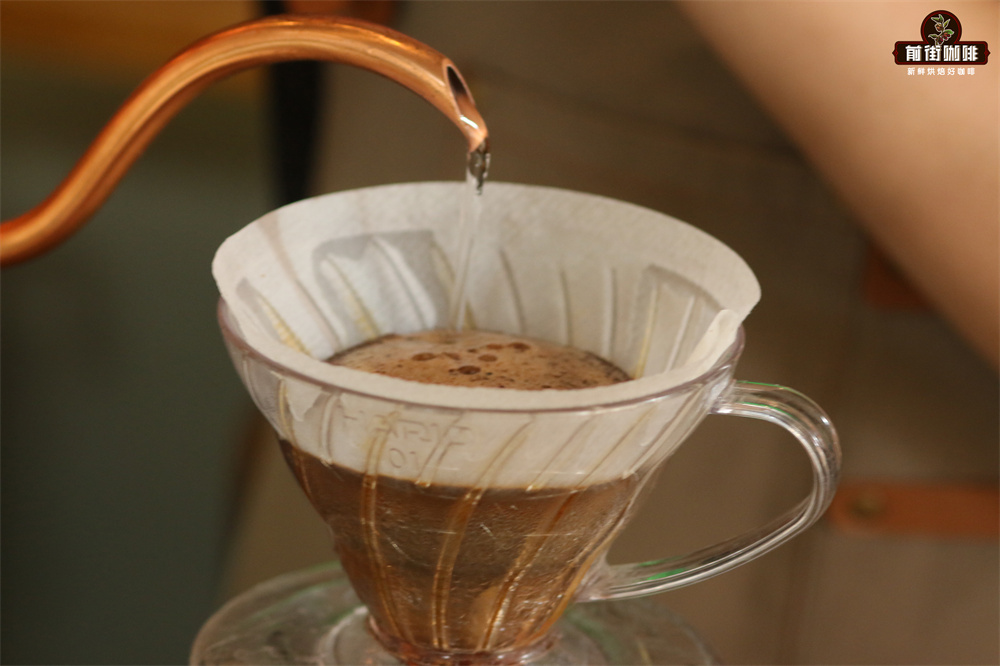
The use of segmented extraction, with twice the amount of coffee powder water for steaming, that is, 30 grams of water for 30 seconds, and the reason for the need for steaming process is to make coffee powder can discharge the internal carbon dioxide gas, so that the latter stage of the extraction is better stable. When the small water is injected around the circle to 125 grams, the injection will be stopped until 225 grams, then the filter cup will be removed after the dripping of the filter cup, and the extraction time will be 2 minutes 39 grams. Next, pick up and shake the whole cup of coffee, then pour it into the cup and taste it.
Front Street Columbia Rose Valley coffee flavor features: alcoholic chocolate, roses, cranberries, peaches, cream.
Front Street Columbia Flower and Moon Night Coffee flavor: rich strawberry jam, rose sweetness, rich strawberry, jam, wine heart chocolate flavor.
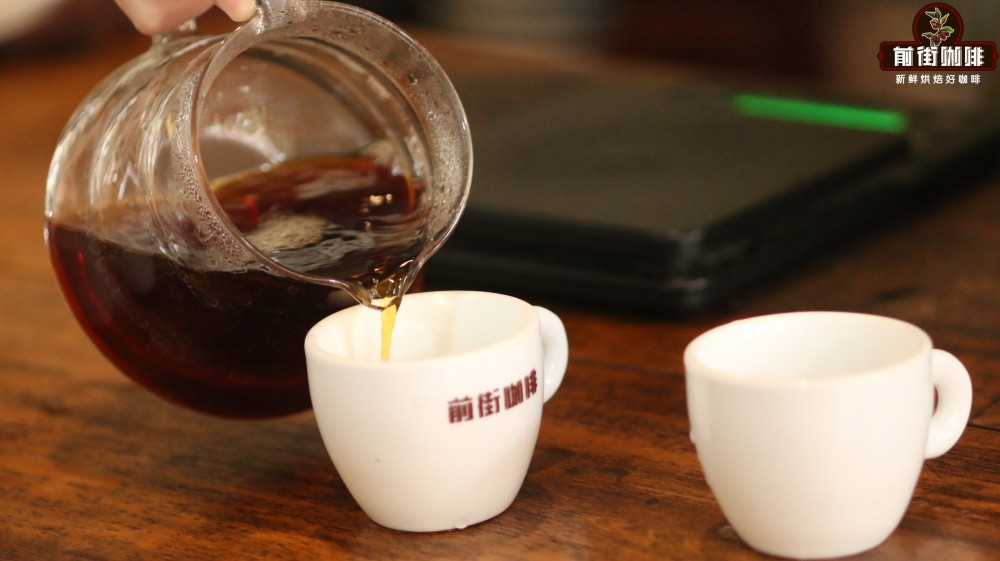
As rations beans and one of the front street boutique coffee beans, Colombian Huilan coffee may taste stronger, with obvious flavors of nuts, dark chocolate and fruit acidity, but as mixed beans, it tastes absolutely good and must be slippery. Of course, everyone's taste is different, as for how to cook it, Qianjie thinks it all depends on personal liking. In front of the street, there are more than half a hundred individual coffee beans from different producing areas, which can completely make everyone's choice and love of coffee.
Suggestions for making coffee in front of the street:
For the brewing of coffee, Qianjie has always believed that the freshness of coffee beans has a great relationship with the flavor of coffee, so the coffee beans shipped in Qianjie coffee are roasted within 5 days. The purpose of Qianjie roasting is "freshly roasted coffee", so that every guest who places an order is the freshest coffee when he receives it. The bean cultivation period of coffee is about 4-7 days, so when the guest gets it, it is the time when the flavor is the best.
For those who need to be ground, Qianjie warmly reminds you that if the coffee beans are ground in advance, there is no need to raise the beans, because in the process of transportation, the pressure caused by carbon dioxide in the package can also make the coffee flavor round. so you can drink a cup of coffee as soon as you receive the coffee powder. But the coffee powder needs to be brewed in time, because the coffee powder oxidizes more quickly after contact with the air, that is to say, the flavor of the coffee will dissipate more quickly, and the flavor of the coffee is not so good. Therefore, Qianjie suggests buying whole beans, grinding and flushing now, so that we can better taste the flavor of coffee.
Professional coffee knowledge exchange more coffee bean information please follow the coffee workshop (Wechat official account cafe_style)
For more boutique coffee beans, please add private Qianjie coffee on Wechat. WeChat account: qjcoffeex
Important Notice :
前街咖啡 FrontStreet Coffee has moved to new addredd:
FrontStreet Coffee Address: 315,Donghua East Road,GuangZhou
Tel:020 38364473
- Prev

The Origin of Ethiopian Yegashefi Coffee beans
Yega Sheffield Coffee refers to the Yega Sheffield Coffee produced in Ethiopia. Yega Xuefei is the name of a local town. It is about 1700-2100 meters above sea level. Now Yejashafi coffee has become synonymous with Ethiopian boutique coffee. Chinese name Ethiopia Yega Xuefei Coffee Foreign name Yirgacheffe main ingredient Coffee contains preservatives not suitable for young people
- Next
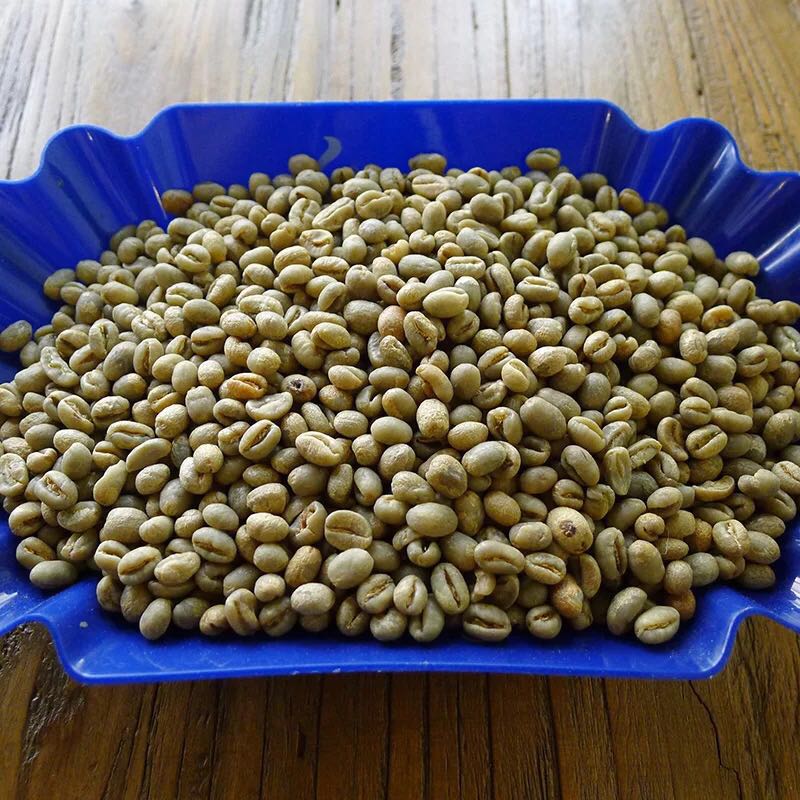
Indonesia Mantenin boutique coffee cooked beans Sumatra imported hand traditional wet planing method
Manning: the palate is rich and solid, with a pleasant sour taste. The smell is mellow, the acidity is moderate, the sweetness is rich and very intriguing, it is suitable for deep baking and exudes a strong aroma. The gentleman in coffee-- Sumatra Mantenin is a first-class coffee bean growing in the plateau and mountain area at an altitude of 750-1500 meters. It is of first-class manning quality produced by Takengon and Sidikalang.
Related
- Does Rose Summer choose Blue, Green or Red? Detailed explanation of Rose Summer Coffee plots and Classification in Panamanian Jade Manor
- What is the difference between the origin, producing area, processing plant, cooperative and manor of coffee beans?
- How fine does the espresso powder fit? how to grind the espresso?
- Sca coffee roasting degree color card coffee roasting degree 8 roasting color values what do you mean?
- The practice of lattes: how to make lattes at home
- Introduction to Indonesian Fine Coffee beans-- Java Coffee producing area of Indonesian Arabica Coffee
- How much will the flavor of light and medium roasted rose summer be expressed? What baking level is rose summer suitable for?
- Introduction to the characteristics of washing, sun-drying or wet-planing coffee commonly used in Mantenin, Indonesia
- Price characteristics of Arabica Coffee Bean Starbucks introduction to Manning Coffee Bean Taste producing area Variety Manor
- What is the authentic Yega flavor? What are the flavor characteristics of the really excellent Yejasuffi coffee beans?

